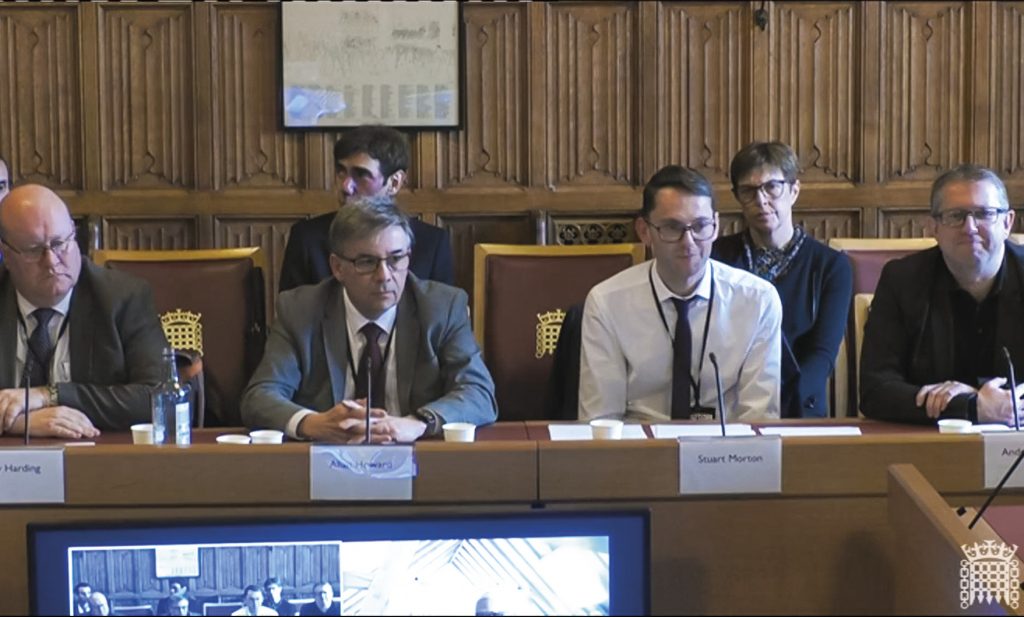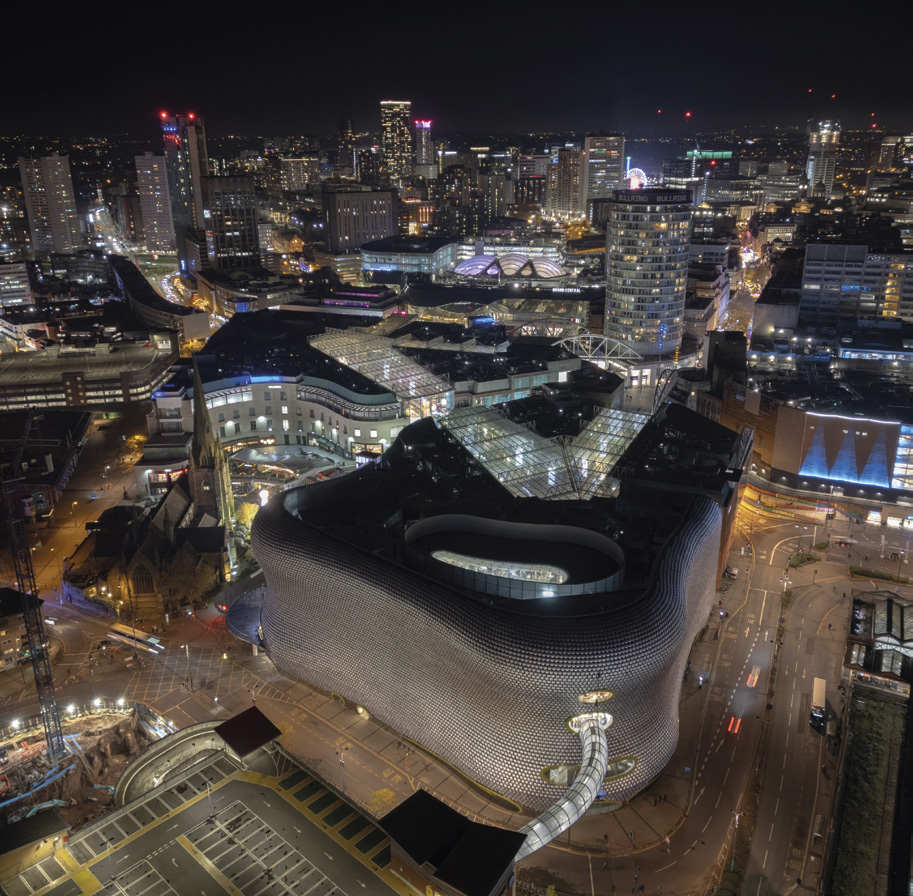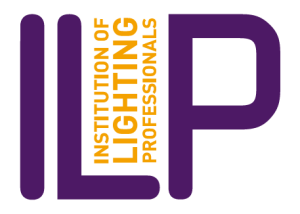The government has published its response to the Lords Science and Technology Committee report into light and noise pollution. And it could hardly be more underwhelming
The Lords Science and Technology Committee was nothing if not comprehensive in its recommendations for mitigating light pollution published last summer.
Its report, The neglected pollutants: the effects of artificial light and noise on human health, based on an inquiry to which the ILP, SLL and a range of senior industry figures all contributed evidence, made it clear the eminent peers felt light pollution is something that has been overlooked within national and local government for far too long [1].
Among a wide range of recommendations, it called for a Light Policy Statement for England to be developed, one that would detail how best to minimise light pollution and the role different government departments should play in this.
Planning guidance, the peers argued, should incorporate, and reflect, up-todate light pollution guidance from the bodies such as the ILP, SLL, and CIBSE. The peers called for local authorities to be given the resources they need to enable them to prioritise mitigating light pollution; for research to be carried out into how light affects our circadian system, especially the impact of glare on night-time driving; for the National Institute for Health and Care Excellence (NICE) to review the efficacy of therapies such as light boxes;

and for the UK Health Security Agency (UKHSA) to establish an expert team to act as ‘a single point of evidence’ on the impacts of light on health.
As Lighting Journal said at the time, the key to this – whether the inquiry and report became a significant marker in the sand or just another dust-gatherer on a shelf – would be how the
government responds.
That finally happened in December, with the government publishing its formal response to the recommendations [2]. And, in truth, it was the political equivalent of tumbleweed – in that the government either rejected or deflected every single recommendation.
The government framed its response around three areas of recommendation: research and evidence; policy, legislation and co-ordination; and advice, guidance and resourcing.
RESEARCH AND EVIDENCE
The government highlighted that the Department for Transport (DfT) is ‘considering potential research’ to quantify the real-world occurrence of glare and dazzle on the road. However, it rejected the Lords’ recommendation for a standard methodology to be developed for tracking, monitoring and reporting on light pollution.
‘At present, major technical and data issues need to be resolved before this can be considered feasible. Existing data cannot provide a comprehensive picture of street lighting, and would not cover lighting choices at private residences and many other buildings,’ it highlighted.
‘While technological capabilities are advancing, satellite monitoring capable of picking up the full spectrum of LED light is in its infancy. Unlike noise, we do not yet have the technical solutions to enable artificial light exposure mapping. Further development of the evidence base will need to be considered within the context of government priorities.’
In terms of whether NICE should review the efficacy of light therapies, this was up to NICE to decide. ‘As NICE uses the best available evidence to develop its recommendations, and its surveillance programme proactively explores whether there is any new evidence to contradict, reinforce or clarify its guideline recommendations, it is well placed to identify any changes which may cause it to review its advice on light therapy and update if appropriate,’ it said.
While the government agreed that cross-government and interdisciplinary approaches to noise and light ‘are important’, it did not agree that ‘a formal expert body on either noise or light is necessarily the most effective approach to drawing in the right expertise.’
| ‘WE ARE NOT TAKING THIS LYING DOWN’ |
| UK Lighting Liaison Group (UK LLG) members welcomed the House of Lords Science and Technology Committee’s report, writes UK LLG secretary Allan Howard. It reflected the written and verbal evidence presented and, following its publication, the LLG reached out to the committee to offer the industry’s support to action/consider the points and requirements recommended. The committee welcomed this, but the peers indicated they wanted to see the government’s response before taking this further. The government’s response is certainly disappointing, but we are not taking this lying down and the LLG has already started to consider the House of Lords report. A working group has been established and a basis of a UK lighting strategy is being considered, drawing upon existing guidance, standards and a draft strategy partially developed when the All-Party Parliamentary Lighting Group existed. We are not looking to reinvent the wheel but look at what good practice exists, identify gaps and consider how we may influence what is considered as outstanding, as it may exist or can be targeted with some informed feedback and/or applied research. So, with the LLG’s support we can move forward to a time when there are no significant barriers to good law and light pollution reduction. The LLG will again contact the Science and Technology Committee to determine how as industry representatives we can support and take forward their recommendations. |
It added: ‘Both noise and light cover a very wide spectrum of expertise, given the many possible areas of interaction between both noise and light and our human experience – in addition to the interactions with other species. Flexibility must be maintained to draw in the most appropriate expertise to individual areas of research, rather than relying on a group of individuals to embody all necessary knowledge across the board.’
POLICY, LEGISLATION AND CO-ORDINATION
The development of a Light Policy Statement for England was at the heart of the Lords’ recommendations when it came to national policy responses. Again, however, ministers were unimpressed.
As the government response made clear: ‘Significant gaps in our understanding of the effects of artificial light would need to be addressed to inform a Light Policy Statement for England.
‘A more immediate priority will be identifying the most important knowledge gaps to prioritise the research needed to inform such a statement.’
The UKHSA would, it said, ‘consider’ setting up a dedicated team focusing on light and health. ‘However, we note that a single team for either light or noise would not eliminate the need for localised experts working in different areas of government, as already the case,’ it added.
ADVICE, GUIDANCE AND RESOURCING
The response here was focused on the Lords’ recommendations around enhancing and streamlining guidance around artificial light and, critically, for better resourcing of local authorities to manage noise and artificial light.
Ministers conceded that the report ‘noted the proliferation and lack of coherence in industry advice and guidance on artificial light.’ Nevertheless, the government argued the advice and guidance available to government through existing specialist workstreams is adequate to the task.
It highlighted, for example, how the DfT’s local highways team works with the UK Roads Leadership Group (UKRLG) Lighting & Adaptation Board to disseminate best practice. National Highways, too, ‘adheres to its Design Manual for Roads and Bridges (DMRB), which is regularly updated and contains information about current design standards relating to the design, assessment, inspection and maintenance of lighting on motorways and all-purpose trunk roads in the United Kingdom.’
On nationally significant infrastructure projects, the National Policy Statement for National Networks provided advice on minimising light pollution from projects. Where appropriate, external best practice could also always be referenced within planning practice guidance, it pointed out.
‘Several guides published by the Chartered Institute of Building Services Engineers – Society of Light and Lighting are already referenced in Planning Practice Guidance on Light Pollution,’ the government said.
‘While one-size-fits-all guidance would do little to serve professionals within specific fields, the most significant gaps in readily available guidance can be explored through the wider review of the NPPF [National Planning Policy Framework] and subsequent updates to Planning Practice Guidance,’ it added.

The Lords highlighted the number and extent of facilities, including transport hubs, lighthouses and prisons, that are exempt from statutory nuisance law as regards artificial light.
On this at least, the government conceded ‘there may be scope’ to provide greater guidance for local planning authorities through the NPPF review, adding: ‘We will explore the most appropriate avenues for clarifying the messaging to existing facilities with regard to adhering to best practice in lighting.’
Yet, and in conclusion, when it came to local government resourcing the government pushed back firmly on the recommendation that the Department for Levelling Up, Housing and Communities should set out what resources local authorities should have to respond adequately to light and noise pollution.
This, ministers argued, ‘would involve restricting the choices local authorities are able to make over their own staffing and funding priorities, which is not current government policy.’
| NEED TO KNOW |
| > The government has either rejected or deflected all the recommendations within the Lords Science and Technology Committee’s report into noise and light pollution. >‘Significant’ gaps in our understanding of the effects of artificial light would need to be addressed before a Light Policy Statement for England can be developed, it argued. >Directing local authorities on the resources they should put in place for prioritising and tackling light pollution would be restrictive and not be government policy, ministers added. |



